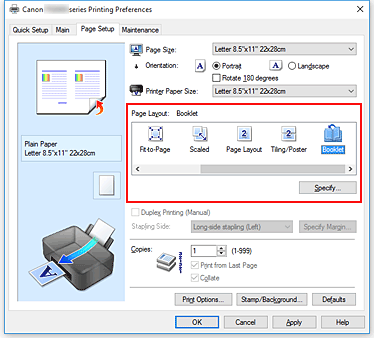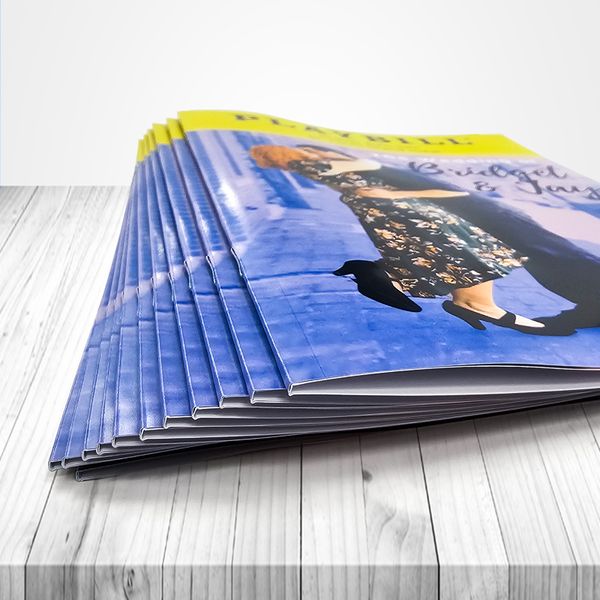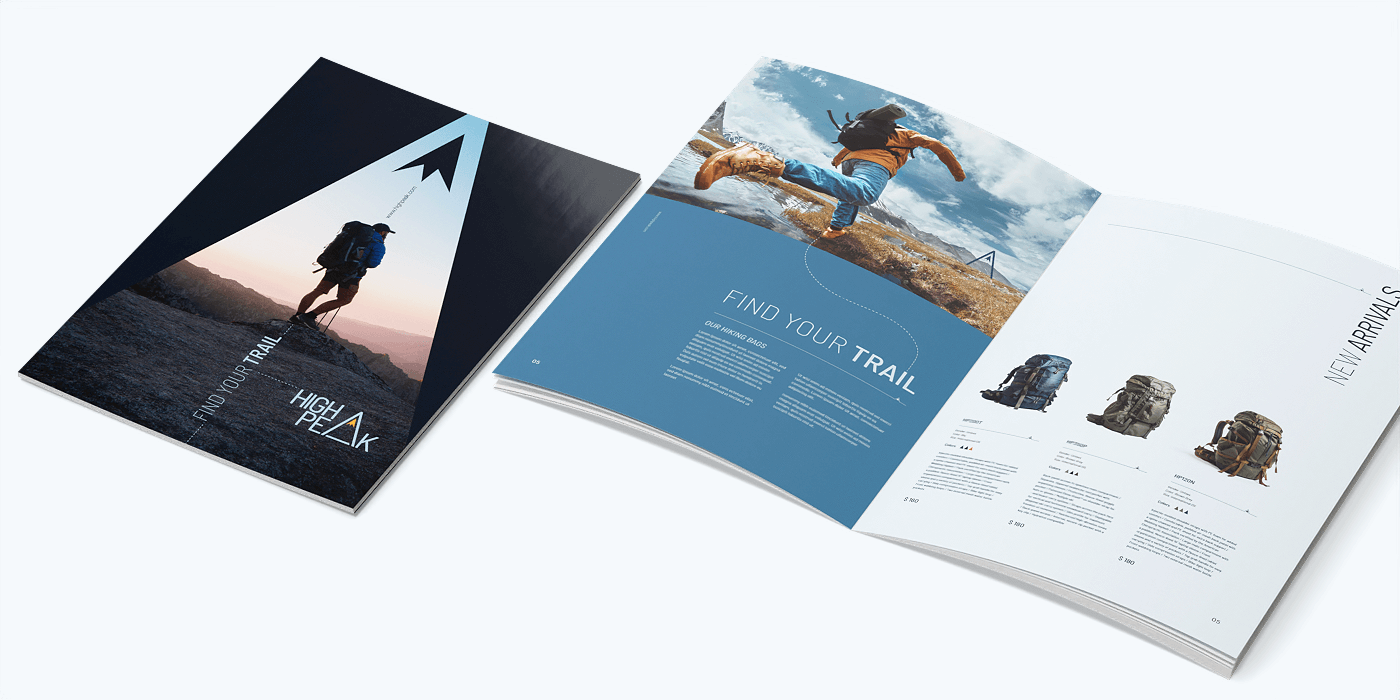How to Use Booklet Printing to Boost Customer Engagement in 2025
How to Use Booklet Printing to Boost Customer Engagement in 2025
Blog Article
The Vital Guide to Understanding Booklet Printing Options and Techniques
The process of pamphlet printing includes multiple considerations that can substantially influence the last product. From picking the proper format and size to recognizing the subtleties of binding methods, each selection plays a crucial role. Additionally, aspects such as paper stock and printing strategies additional influence the efficiency of the booklet. As one browses these choices, it becomes crucial to grasp just how they interconnect and what that suggests for the general end result.
Recognizing Booklet Dimensions and formats
When thinking about brochure printing, comprehending the numerous formats and dimensions offered is necessary for achieving the wanted presentation. Brochures can be generated in various formats, consisting of saddle-stitched, spiral-bound, and perfect-bound, each offering distinctive advantages. Typical sizes range from basic letter (8.5 x 11 inches) to smaller sized options like A5 (5.8 x 8.3 inches), enabling flexibility based on web content and target audience.Selecting the suitable size can affect both the format and viewers interaction. Bigger dimensions might fit aesthetically driven content, while smaller sized formats may be more user-friendly and portable. In addition, the variety of web pages affects the option of binding technique, as thicker pamphlets might need sturdier bindings. Ultimately, comprehending these elements permits an extra customized approach, ensuring that the end product lines up with the desired message and aesthetic, improving the general efficiency of the interaction.
Picking the Right Paper Supply

Binding Techniques: Factors To Consider and choices
When it involves binding approaches for booklets, a number of choices are offered, each with distinct advantages. Saddle stitch binding uses a cost-effective service for thinner booklets, while best binding strategies give an even more sleek seek thicker magazines. Wire-O binding stands apart for its toughness and convenience of usage, making it ideal for files that require versatility.
Saddle Stitch Binding
Saddle stitch binding uses a cost-efficient and sensible remedy for assembling booklets, making it a preferred selection amongst businesses and publishers. This binding approach entails folding sheets of paper in fifty percent and stapling them along the fold line, producing a cool and orderly look. Commonly appropriate for brochures with a reduced web page matter, saddle stitching is optimal for magazines, brochures, and instructional products. The simpleness of this strategy enables for quick production and is often preferred for promotional things or brief runs. Nevertheless, it is vital to keep in mind that saddle stitch binding might not be appropriate for thicker booklets, as the back might not stand up under boosted weight. Generally, it remains a reliable option for many printing tasks.
Perfect Binding Methods
Perfect binding is an extensively utilized strategy that gives a sleek and expert coating to magazines and booklets. This technique entails gluing the pages with each other at the spine utilizing a strong adhesive, enabling a clean side and the capacity to hold a larger variety of web pages compared to saddle stitching. Perfect binding is particularly appropriate for thicker pamphlets, such as brochures and yearly records, where a sturdy, level back is desired. Furthermore, it offers the choice for a printed cover that can be designed to boost aesthetic appeal. Factors to consider such as web page matter, paper weight, and the intended use of the booklet must be taken right into account, as they can influence durability and overall high quality.
Wire-O Binding Alternatives
Wire-O binding, known for its sturdiness and adaptability, supplies a superb alternative for pamphlets that require easy page turning and a professional appearance. This binding technique utilizes a series of metal loopholes that hold web pages firmly, permitting them to exist flat when open. It is specifically ideal for directories, presentations, and manuals because of its robust nature. Wire-O binding is readily available in different colors and diameters, suiting various page counts and thicknesses. Furthermore, it allows the addition of covers and tabs, boosting the booklet's total visual. Considerations for Wire-O binding include the selection of cable color, the dimension of the loops, and the extent of modification preferred, all of which can greatly affect the final item's look and capability.
Digital vs. Offset Printing: Which Is Best for You?
When choosing a printing method for brochures, comprehending the differences in between digital and balance out printing is crucial. Digital printing utilizes modern-day technology to produce top quality prints quickly and economically, making it perfect for brief runs or projects calling for quick turn-around times. It permits customization, supplying the ability to publish on-demand with minimal waste.In comparison, balance out printing is a traditional technique that succeeds in creating huge quantities with regular quality. It includes moving ink from a plate to a rubber blanket, then to the paper, which causes exact details and lively shades. Counter printing generally calls for longer configuration times and is extra economical for larger volumes.Ultimately, the selection in between digital and counter printing depends on job requirements, spending plan, and preferred quantity. For little, time-sensitive tasks, digital might be the very best option, while balanced out may be more effective for bigger, high-grade manufacturings.

Creating Your Brochure: Tips and Finest Practices
When developing a booklet, mindful focus to design, font selection, and shade use can significantly enhance its performance. A well-structured design guides the reader's eye, while appropriate typefaces assure readability and communicate the desired tone. In addition, reliable use of color can stimulate emotions and emphasize crucial information, making the total style more impactful.
Picking the Right Design
Just how can one successfully choose the best design for a brochure? It is necessary to assess the pamphlet's purpose and target audience. A tidy, organized format enhances readability and involvement. Utilizing a grid system can assist in aligning aspects consistently, producing a professional appearance. In addition, integrating aesthetic hierarchy with differing sizes and positionings of photos and text can assist the reader's eye and highlight crucial information. It is additionally essential to leave sufficient white area, which protects against overcrowding and enables far better focus. Checking various formats through mock-ups can offer insight right into exactly how the layout executes in real-world scenarios, guaranteeing that the final product satisfies both useful and visual needs. Useful Picking Appropriate Fonts
A well-chosen font can greatly enhance the overall design of a booklet, complementing the layout and reinforcing the content's message. The selection of fonts should consider readability, specifically for body message, as it assures the info comes to all readers. Sans-serif font styles are commonly liked for electronic styles, while serif font styles can provide a typical feeling in printed materials. It's advisable to restrict font selections to 2 or 3 to preserve visual comprehensibility. In addition, font style dimension plays a crucial function; headings ought to be distinct yet not frustrating, while body message ought to be comfortable for analysis. When choosing typefaces, placement with the brochure's theme and target audience is vital for effective communication and aesthetic allure.
Efficient Use of Shade
Color functions as a powerful device in booklet layout, leading and shaping assumptions reader feelings. It can stimulate feelings of exhilaration, count on, or calmness, relying on the hues chosen. Developers should think about shade theory principles, making sure that the picked palette lines up with the pamphlet's message and target audience. For example, utilizing cozy shades like red and orange can create seriousness, while cooler tones like green and blue foster tranquility.Additionally, contrast plays an important function; corresponding colors can boost readability and aesthetic appeal. Consistency in color usage throughout pages even more enhances brand identity and cohesion. Ultimately, effective color implementation not only captures attention but additionally enhances the brochure's function, making it a crucial element of successful design.
Completing Touches: Coatings and Unique Impacts
While numerous think about the content and layout of a booklet the most vital aspects, the finishing touches, such as coatings and unique results, play a necessary function in improving its overall allure. Coatings can give security and sturdiness, guaranteeing that the pamphlet holds up against damage. Matte surfaces offer an innovative, non-reflective surface area, while glossy finishings can make colors show up even more eye-catching and vivid. Special effects, like embossing or aluminum foil stamping, include a responsive measurement that can create a remarkable perception. These techniques can highlight certain areas, accentuating crucial information or developing visual passion. Additionally, UV covering can provide a high-shine coating that elevates the general look.Together, these finishing touches not only boost the pamphlet's aesthetic yet likewise connect professionalism and reliability and focus to detail, inevitably leaving a long-term effect on the viewers.
Cost Considerations for Pamphlet Printing
Understanding the various price considerations for brochure go to the website printing is crucial for companies and companies intending to maximize their budgets. Secret aspects affecting costs include the option of ink, paper, and binding approaches. Greater quality materials, such as premium paper or specialized inks, generally increase the overall expenditure. In addition, the size and web page count of the pamphlet play a substantial duty; larger booklets require even more resources and time to produce.Another vital factor to consider is the printing technique, whether digital or offset, as each has its own pricing framework and viability for various amounts. Organizations should also consider layout prices, which can differ based upon intricacy and the usage of specialist solutions. Ultimately, shipping and handling fees can add to the total, especially for huge orders. By evaluating these components, companies can make enlightened choices that line up with their monetary abilities while achieving the preferred top quality in their printed materials.
Frequently Asked Inquiries
What Are the Ecological Effects of Brochure Printing?
The ecological influences of pamphlet printing include deforestation from paper manufacturing, carbon discharges from transportation, and waste generation from thrown out products - Booklet Printing. Sustainable practices, such as making use of recycled paper and green inks, can alleviate these impacts
Exactly How Can I Make Certain Color Precision in My Brochure?
To ensure color accuracy in a pamphlet, one must utilize adjusted screens, employ specialist shade profiles, perform test prints, and pick high-grade printing services that offer color matching and proofing choices for best have a peek here outcomes.
What Is the Common Turn-around Time for Brochure Printing?
The common turnaround time for pamphlet printing varies relying on the complexity and amount - Booklet Printing. Typically, it varies from a couple of days to 2 weeks, affected by elements such as publishing techniques and finishing demands
Exist Minimum Order Quantities for Brochure Printing?

Can I Print Booklets in Several Languages?
Publishing brochures in numerous languages is feasible. Several printing solutions supply options for bilingual or multilingual layouts, permitting efficient communication. Careful planning guarantees that develop aspects accommodate various languages without why not try here compromising readability or looks. Furthermore, aspects such as paper supply and printing methods additional influence the effectiveness of the booklet. When considering pamphlet printing, recognizing the numerous styles and sizes offered is vital for accomplishing the desired discussion. When picking a printing technique for brochures, understanding the differences in between digital and offset printing is essential. Additionally, the dimension and page count of the pamphlet play a substantial function; bigger pamphlets need more sources and time to produce.Another crucial consideration is the printing technique, whether electronic or balanced out, as each has its own rates structure and viability for various quantities. The ecological effects of booklet printing consist of deforestation from paper manufacturing, carbon discharges from transportation, and waste generation from thrown out materials.
Report this page